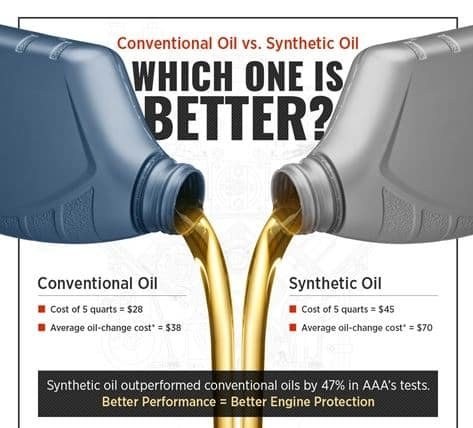How Much Oil Does My Car Need? This is a question that drivers often ask themselves, and it can be a difficult one to answer.
Factors that affect how much oil your car needs include how you drive and the type of engine your car has.
The amount of oil that a car need varies depending on the make of the car, the age of the car, and the driving habits of the driver. Generally, cars need between 5 and 7 quarts of oil to be filled at each oil change.
Motor oil is vital to engine function because it helps to lubricate the moving parts of the engine. This reduces wear and tear on the parts and helps to ensure that the engine runs smoothly. Additionally, motor oil helps to remove heat from the engine, which can help prevent damage.
Also Read: Why is White Smoke Coming from My Exhaust?
Guidelines from the manufacturer or a trusted mechanic can help you get an idea of how much oil to use, but ultimately we have some approximate figures on how much oil your car needs.
The amount of oil needed for a 4-cylinder engine is usually five quarts, while a 6-cylinder engine typically needs six quarts.
How engine size affects the amount of oil used?
Engine size affects the amount of oil used because a larger engine has more pistons and crankshafts that move, which means it creates more heat.
The larger engine also requires more oil to lubricate all the moving parts.
Most engines require 5 to 8 quarts of oil depending on the engine size. The engine is small and requires less oil to fill the engine volume.
- A 4-cylinder engine typically requires 5 quarts of oil
- The 6-cylinder engine uses about 6 quarts
- The 8-cylinder engine uses anywhere from 5 to 8 quarts depending on the engine size
This amount also changes depending on whether you have mechanically replaced the oil filter when changing the oil.
Some of the resources available to assist vehicle owners in locating the engine’s oil capacity include the owner’s manual, which is usually listed under the Lubrication System in the Vehicle Specifications section. Another area to check out is the manufacturer’s website.
Once on the website, look for a section of the site specifically for vehicle owners, usually found at the bottom of the page.
Vehicle owners can also search other online resources such as Fluid Capacity, which lists the oil and fluid capabilities of a wide variety of manufacturing and models of cars and trucks.
Choosing the Right Type of Motor Oil
The viscosity of motor oil is important because it affects how the oil flows. Thicker oils flow more slowly than thinner oils, so they are better at protecting the engine from wear and tear.
However, they can also cause the engine to run more slowly and heat up more quickly. Motor oils are available in a variety of viscosities, and you need to choose one that is appropriate for your car’s engine.
The first number indicates the flow of oil at 0 degrees Fahrenheit, W means winter, and the last two digits after W indicate the oil viscosity level when measured at 212 degrees Fahrenheit. If the number before W is less, the engine will change easily in cold weather.
It’s good to read the vehicle owner’s manual to find the best oil viscosity levels to use.
The two main types of motor oil are synthetic and conventional. Synthetic oil is made from chemicals, while conventional oil is made from petroleum.

Many people believe that synthetic oil is better for your vehicle because it lasts longer and performs better in extreme temperatures. However, using synthetic oil can be more expensive.
Owners need to choose between using synthetic or conventional motor oil based on their needs and budget.
Symptoms that an engine needs an oil change
The following is a list of symptoms that may indicate that an engine needs an oil change:
The vehicle is difficult to start, there is a knocking noise coming from the engine
The check engine light is on, the car is using more oil than usual, or the oil smells burnt.
- Engine Noise, you may start to observe changes in the engine noise, usually, there will be raise in the noise
- Poor Fuel Economy, sudden drop in the mileage
- Smoke from the Exhaust, excess smoke from the exhaust
- Oil on the Engine Bay, you may see oil at the engine bay
- Dirty Oil Filter, clogged and dirty oil filter id you open and observe
- Low Oil Level, Low oil level indication is the standard symptom
It is important to have the oil changed regularly in order to keep the engine running smoothly and to prevent damage.
The Best Time to Change Your Motor Oil
There is no definitive answer as to when the best time to change your motor oil is. Depending on who you ask, you’ll likely get a different answer.
Some mechanics say that you should change your oil every 3,000 miles, while others say 5,000 or even 7,500 miles. It really depends on the type of engine oil you’re using and how you drive your car.
If you’re using conventional motor oil, it’s best to change it every 3,000 miles or every 3 months, whichever comes first. If you’re using synthetic motor oil, it’s generally recommended to change it every 7,500 miles or every 6 months.
Conclusion
It is important to understand how much oil your car needs in order to keep it running smoothly. Neglecting to change your car’s oil can cause extensive damage and lead to costly repairs. Be sure to consult your car’s owner’s manual to find the recommended oil type and weight, and then follow the manufacturer’s guidelines for changing your car’s oil.




